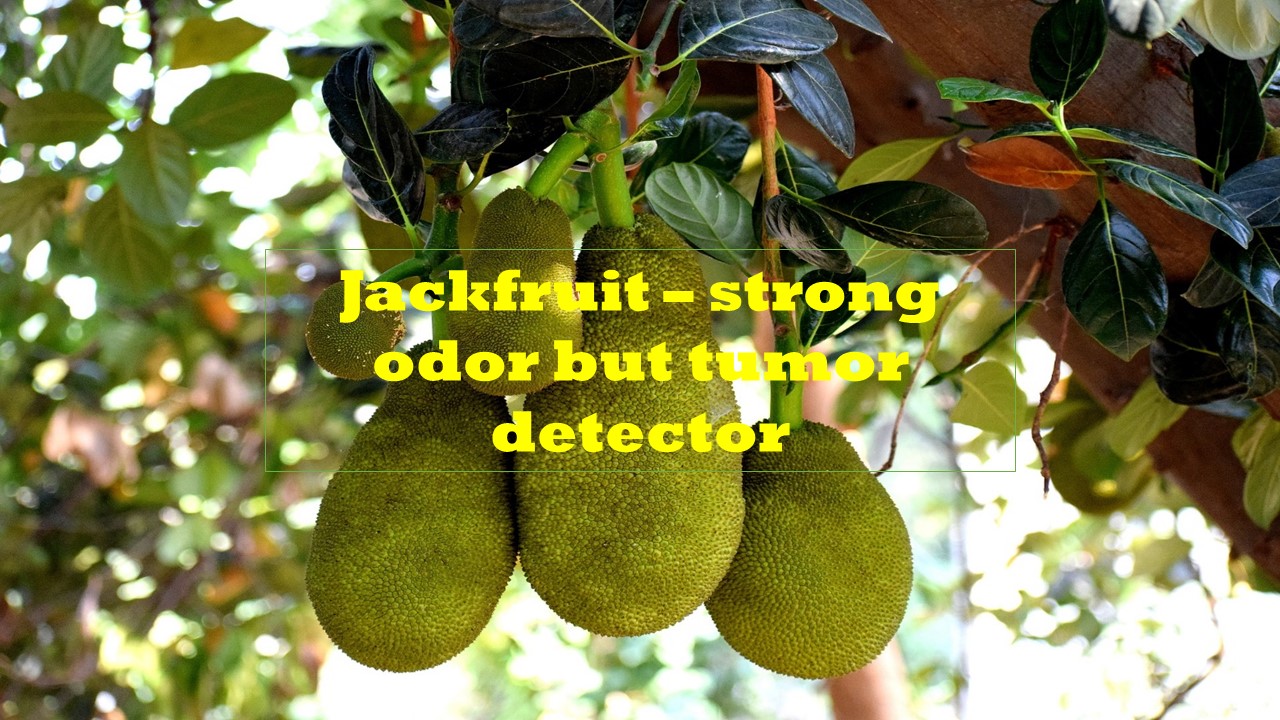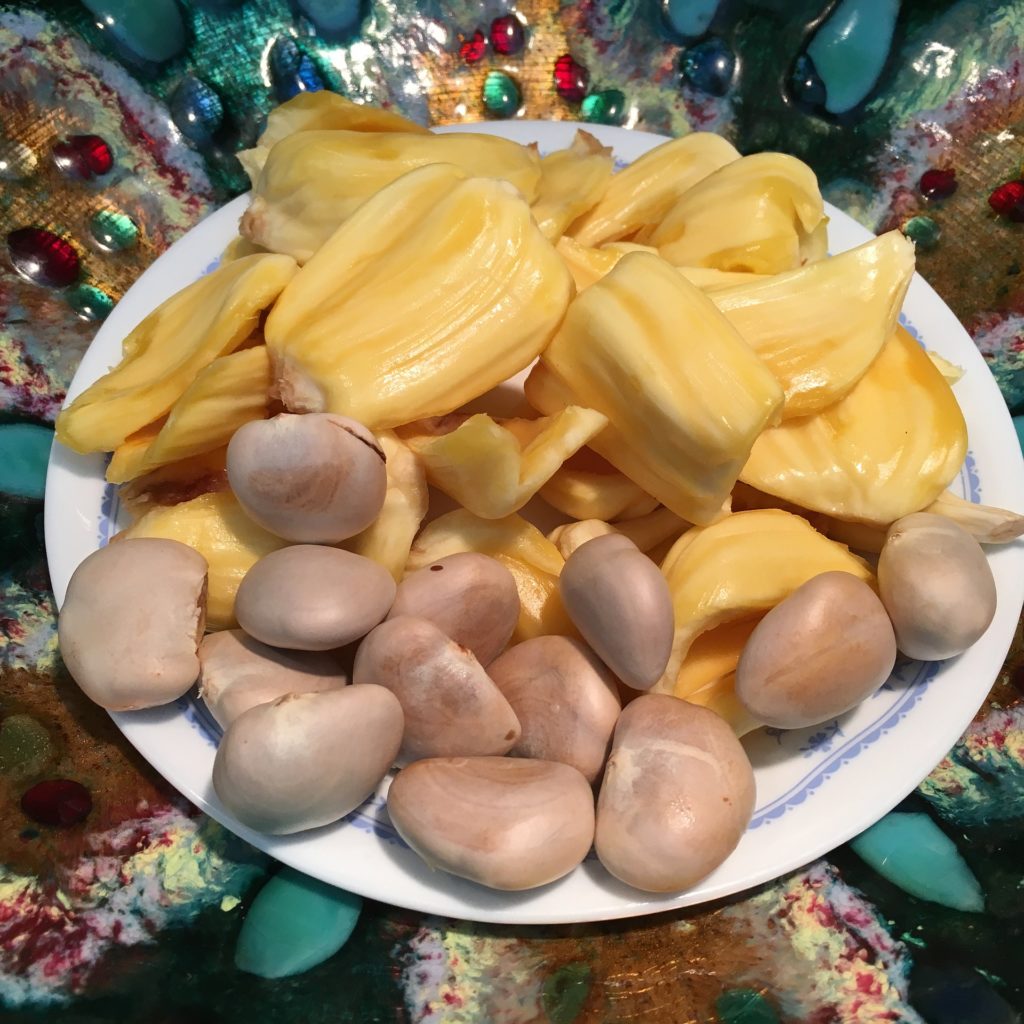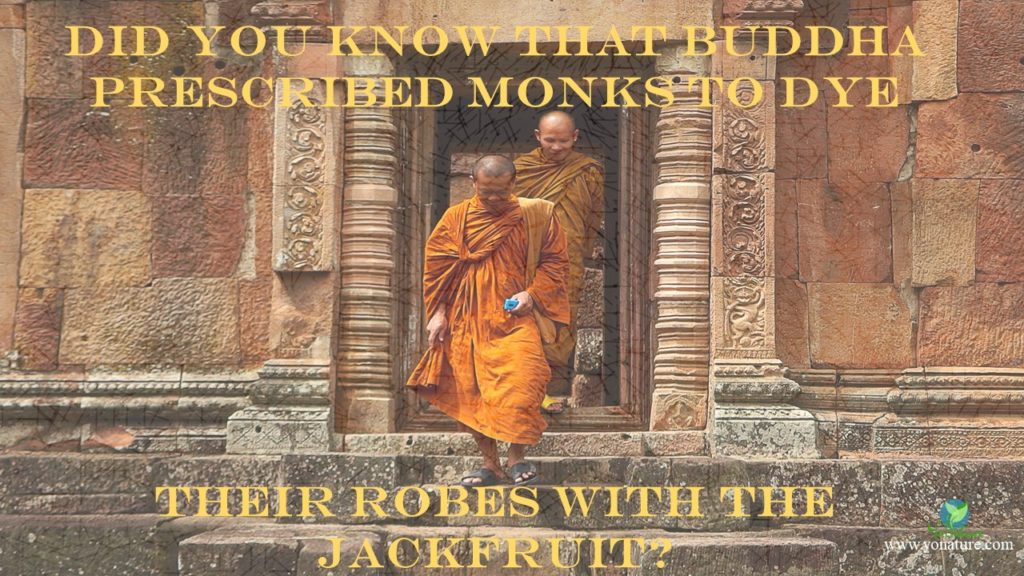Jackfruit – Don’t judge by the smell!

Commonly known as ‘zak, or ‘jacque’ in Mauritius, the jackfruit is normally coined with bad smelling odors. Natives make fun of people who give off strong smells by associating them with the ripe jackfruit smell. Though this is how we normally see the jackfruit, the enormous fruit has quite a number of values, both unripe and mature.
Origin of the jack
Artocorpus heterophyllus (scientific name), is native to India and is widely distributed in tropical and subtropical regions like Mauritius to Brazil and China. Another species, artocarpus lakoocha, known as the monkey jack, is also common in Mauritius [1]. Archaeological findings suggest that the tree was cultivated in India some 6000 years ago; it naturalized across Asia and quickly became an important crop in India, Malaysia, Thailand and China. European movement across the oceans helped in disseminating the trees in the adjoining areas resulting in their distribution today.
In the same way, the jackfruit was grown in Mauritius; travellers moving to and from India and south-east Asia by boats brought the fruit here. It grows well in the hot climates reaching heights of 25 m. The tree produces the biggest known fruits weighing between 30-35 kg with average yields of up to 150 fruits per year. It is an evergreen plant nicknamed the ‘poor man’s food’ in Bangladesh as it yields a high amount of products that are easily accessible to the population.
What does the jackfruit contain?
The edible parts of the plant include the fruit and the seed; foliage from the plant is usually used as animal fodder. The fruit is surrounded by a thick, spiky, greenish to brown coat, a chunky fibrous, inner white wall and off-white to yellowish fleshy scales which encapsulate the seeds.

The table below highlights the most important elements in the jackfruit [2].
| Nutrients | /165g of plant material
|
| Carbohydrate | 38.36 g |
| Protein | 2.84 g |
| Fat | 1.06 g |
| Dietary fiber | 2.5 g |
| Vitamin C | 22.6 mg |
| Riboflavin | 0.091mg |
| Niacin | 1.518 mg |
| Iron | 0.38 mg |
| Folate | 40 µg |
| Calcium | 40 mg |
| Magnesium | 48 mg |
| Potassium | 739 mg |
| Copper | 0.125 mg |
| Manganese | 0.071 mg |
Jackfruit – meat replacement
The fruits are used to make a variety of sweet and savory dishes, cakes, desserts and pickles. When cooked, it becomes dark brown in color and looks like shredded meat. For this reason, it is often used as a meat alternative by vegetarians or simply to replace meat for those who prefer vegetables. Most of the time, though, it is cooked as a curry with meat or chicken and potatoes and used as a main meal.
The seeds, on the other hand, are boiled or roasted; they are either eaten like peanuts or added to flour for making cakes. There have been studies on the use of seed flour (dry and grounded seeds) as wheat flour substitute. The results are quite encouraging showing high carbohydrate and protein content, and good water and oil absorption capacities. More research is still to be done in this direction to improve the flour quality.
Proven health benefits of the jackfruit
Not only is the jack an easy and abundant supply of food, but it also provides important health benefits.
1. Anti-inflammatory effects
Anti-inflammatory simply means to reduce inflammation which is caused by certain agents in our bodies. Studies on the jackfruit have shown that three compounds, namely artocarpesin, norartocarpetin, oxyresveratrol, present in it, helped to reduce the effects of inflammation. They prevented the release of chemicals that stimulated inflammation conditions [3].
2. Anti-fungal effects
A lectin (plant protein that causes clumping of specific cells) called jackin from seeds of the jackfruit was isolated and found to inhibit the activities of common yeast and Fusarium fungi. Jackin was found to be stable to temperatures up to 80°C and changes in the molecule was seen below pH 6.
3. Immunomodulatory effect
Jacalin, the main protein of the jackfruit, was found to be quite compatible with human T-lymphocytes and is hence used in testing the immune systems of HIV patients. Since jacalin is stable, easily obtained and purified, it is widely used to detect tumours and for the isolation of glycoproteins.
4. Antioxidant effect
Prenylflavones in the jackfruit have been found to have strong antioxidant properties. Antioxidants prevent oxidation of molecules; oxidation changes the shape of a molecule and thus its properties. Cycloheterophyllin and Artonins A and B in the jack prevent the oxidation of lipids when bio-membranes are exposed to oxygen radicals. In the absence of antioxidants, cell membranes are damaged or can even die.
5. Antibacterial effect
Fractioning of different parts of the tree, stem, roots, bark, seeds, fruits, leaves with different petroleum products yield substances that have good antibacterial properties. The bark and fruits were seen to be most effective in inhibiting bacterial activities
6. Antidiabetic properties
Though only preliminary studies have been conducted in this direction, traditional medicine has used extracts of the jack over generations to treat diabetes. Extracts of the leaves decrease the glucose levels in the blood by glycation [4]. Glycation is a mechanism in which sugars like glucose, which is normally present in a person’s blood after a meal, condense with proteins forming more stable molecules.
Jackfruit is used to dye monks’ robes

According to the Vinaya Pikata, a section of the Buddhist’s framework, robes of monks and nuns have to be dyed in a specific way [5]. Buddha prescribed the different parts of the tree (roots, barks, leaves, flowers, tree trunks and fruits) to be used for dyeing. Tree parts are boiled and the clothes are dyed in them; a vegetable mordant is then used to fix the colour. Depending on the combination of raw materials used, yellow, orange to deep russet colours are obtained. Chemicals present in the jackfruit like morin, dihydromorin, artocarpesin and artocarpin amongst others bring out these colours.
Hard and termite resistant wood
In Bali and the surrounding regions, wood from the jack was used in making palaces (and temples in Vietnam) due to its strong yellow colour. In India, Brahmins use the dry branches to produce sacred fire because of its remarkable resistance. The timber, Jack-wood, is used to make furniture as it is very strong, has a soft golden colour and can resist termites. Furniture made out of the Jack-wood looks good, can last up to 20 years before eventually becoming dull like any other furniture and is much cheaper when compared to teak furniture. In fact, Jack-wood is rising on the market as an alternative to teak wood as teak forests are becoming endangered [6] and there is a need for their protection.
References:
- Gurib-Fakim, A. (2015). Mieux connaitre les arbres et arbustres de Maurice et de l’ocean indien, Volume 1. Centre de Phytothérapie et de Recherche, pp 10
- Jackfruit, raw report. United States Department of Agriculture, Agricultural Research Service, National Nutrient Database for Standard Reference Legacy Release. [Online] Available at https://ndb.nal.usda.gov/ndb/foods/show/09144?fgcd=&manu=&format=Full&count=&max=25&offset=&sort=fd_s&order=desc&qlookup=09144&ds=&qt=&qp=&qa=&qn=&q=&ing= [Accessed 05/09/2018]
- Rahman, A.M., Nahar, N., Mian, AJ. and Mosihuzzaman, M. (1999) Variation of carbohydrate composition of two forms of fruit from jack tree (Artocarpus heterophyllus L) with maturity and climatic conditions. Food Chem, 65: 91-9
- Saha, R.K, et al,. (2016). Antioxidant and antibacterial activities of the functional molecules isolated from the seed and peel of jackfruit (Artocarpus heterophyllus). J Pharm Pharmaceuticals 3(1): 1-8
- Richardson, D and Richardson, S. (2016). Yellow dyes. Asian textile studies, [online]. Available at http://www.asiantextilestudies.com/yellow.html [Accessed 10.10.2018]
- Gyi, K.K and Tint, K. Management status of natural teak forests. FAO, [online]. Available at http://www.fao.org/docrep/005/AC773E/ac773e07.htm [Accessed 10.10.2018]
